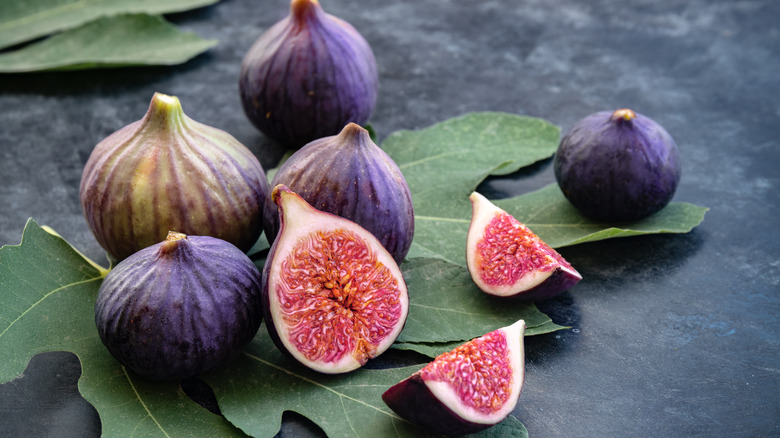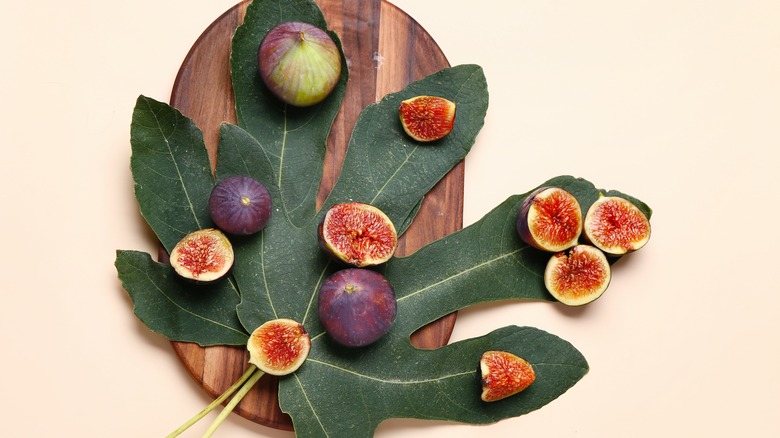How To Extract A Fig Leaf's Delicate Flavor
Biting into the honeyed sweetness of a soft, ripe fig makes us eager for more ways to experience its juicy flavor. The plump fruit uplifts many other foods, whether paired with cheese, wrapped in prosciutto, baked into a cake, or scattered in salads. (Despite what you may have heard about dead wasps, vegans can eat some figs.) Chefs have begun taking notice, however, of fig leaves. Tammy Sons, founder and CEO of TN Nursery, spoke to The Takeout about their delicate flavor and how to properly cook with the leaves.
Sons told us that using fig leaves in the kitchen had been a revelation. "I didn't expect them to be so aromatic," she said. "Coconut, vanilla, and a round, green nuttiness emerges when the leaves are gently heated." Fig leaves are also sometimes described as having almond and pear notes. "To bring out the flavor, I blanch them briefly in boiling water or steep them in warm cream or coconut milk," Sons shared. "I'll scatter fresh leaves over rice while it steams, allowing the grains to absorb their mellow toasty sweetness." She recommends using fresh as well as dried fig leaves. Regarding dried fig leaves, she said, "I crumble them and steep them like a tea or grind them and infuse them into syrups or custards" — adding that they're also good in panna cotta and shortbread.
You do have to be careful about using fig leaves with other ingredients, though. "The flavors come through best in dishes with a fairly neutral base (rice, milk, white fish) so as not to overwhelm those subtle, dusty, earthy flavors and allow them to sing."
Cooking with fig leaves and how to find them
One way to combine white fish and fig leaves (one of the pairings Tammy Sons suggested) is wrapping the fish in the leaves to grill, similar to the banana leaves trick for keeping grilled fish moist. The fish will pick up all those aromatic flavors from the fig leaves in the process. You can make ice cream or rice pudding with cream steeped in the leaves, enhance foods or flavor cocktails with a fig leaf simple syrup, or you can infuse vinegars, oils, and spirits like vodka or rum.
Fig leaves are large, growing up to 10 inches long and 7 inches wide with several finger-like sections. They contain a sap that can irritate the skin if you're sensitive to it. Wear gloves when handling them to be safe (especially if you're cutting them) and wash the sap off quickly if it gets on your skin. Fresh fig leaves only last a day or two in the refrigerator, so use them right away or dry them in the oven to keep longer.
Figs count among the fruits that are hard to find in American grocery stores, so they almost certainly won't carry fig leaves. If you're not lucky enough to have a backyard fig tree or know someone who does, you could ask farmers market vendors who have figs if they'd sell you the leaves. Celebrity chef Ina Garten has said she sometimes has luck finding them at the florist. Dried fig leaves on the other hand, can easily be bought online.

